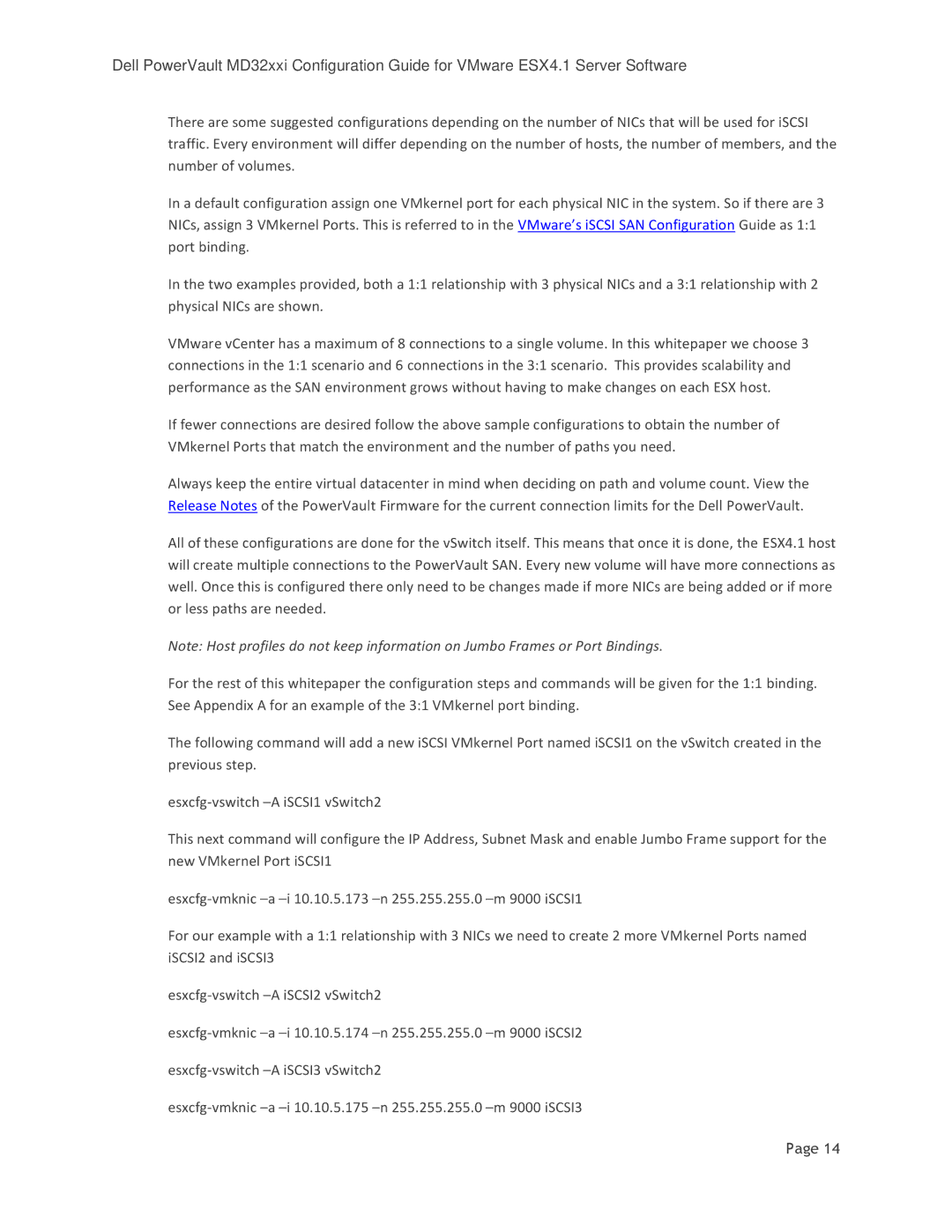Dell PowerVault MD32xxi Configuration Guide for VMware ESX4.1 Server Software
There are some suggested configurations depending on the number of NICs that will be used for iSCSI traffic. Every environment will differ depending on the number of hosts, the number of members, and the number of volumes.
In a default configuration assign one VMkernel port for each physical NIC in the system. So if there are 3 NICs, assign 3 VMkernel Ports. This is referred to in the VMware’s iSCSI SAN Configuration Guide as 1:1 port binding.
In the two examples provided, both a 1:1 relationship with 3 physical NICs and a 3:1 relationship with 2 physical NICs are shown.
VMware vCenter has a maximum of 8 connections to a single volume. In this whitepaper we choose 3 connections in the 1:1 scenario and 6 connections in the 3:1 scenario. This provides scalability and performance as the SAN environment grows without having to make changes on each ESX host.
If fewer connections are desired follow the above sample configurations to obtain the number of VMkernel Ports that match the environment and the number of paths you need.
Always keep the entire virtual datacenter in mind when deciding on path and volume count. View the Release Notes of the PowerVault Firmware for the current connection limits for the Dell PowerVault.
All of these configurations are done for the vSwitch itself. This means that once it is done, the ESX4.1 host will create multiple connections to the PowerVault SAN. Every new volume will have more connections as well. Once this is configured there only need to be changes made if more NICs are being added or if more or less paths are needed.
Note: Host profiles do not keep information on Jumbo Frames or Port Bindings.
For the rest of this whitepaper the configuration steps and commands will be given for the 1:1 binding. See Appendix A for an example of the 3:1 VMkernel port binding.
The following command will add a new iSCSI VMkernel Port named iSCSI1 on the vSwitch created in the previous step.
This next command will configure the IP Address, Subnet Mask and enable Jumbo Frame support for the new VMkernel Port iSCSI1
For our example with a 1:1 relationship with 3 NICs we need to create 2 more VMkernel Ports named iSCSI2 and iSCSI3
Page 14
